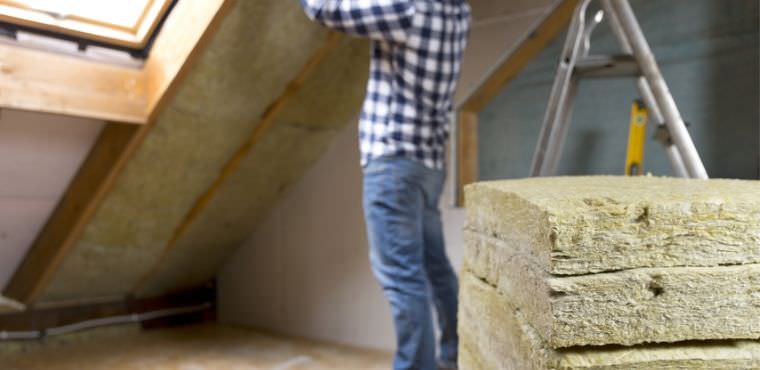In an attempt to save money—or avoid contact with others while social distancing—many people try to tackle a range of home improvement projects without enlisting professional help. While ambitious DIYers can complete a variety of home renovations on their own, others are best left to the professionals. Certain complex projects have a high likelihood that you will mess them up and potentially damage your home. Worst case scenario, attempting these challenging projects could even put your health and safety at risk. To avoid a DIY disaster, make sure to steer clear of these home improvement projects you shouldn’t do on your own.
Installing insulation
A common home improvement project that many homeowners try to tackle on their own is installing insulation. However, doing so can have disastrous consequences on your health, home, and wallet. Among the many reasons why you shouldn’t install insulation on your own is that improper installation of certain insulation types can result in dangerous off-gassing. Such off-gassing releases harmful chemicals throughout your home, which can result in difficulty breathing, worsening asthma symptoms, throat irritation, and an increased risk of cancer, among other negative health impacts.
Aside from the health risks, correctly installing insulation on your own is very challenging. As such, there is a good chance you may leave gaps for air to escape through, which renders the insulation useless and increases the potential for your home to form ice dams, mold, and rust.
Electrical work
Always leave any type of electrical work to the pros. When it comes to taking on an electrical project, there is a significant safety risk unless you are an experienced electrician. Attempting an overly ambitious electrical project could result in fire, electrocution, and even death.
Even if you make it out unharmed, you could make a mistake that takes a serious toll on your power bill. As such, you should refrain from attempting to install new electrical lines or repair faulty wiring on your own.
Removing a wall
Open floorplans are becoming increasingly popular as they help make a space appear larger. As such, many homeowners are removing walls in their homes to create a more open space. However, you should avoid taking a sledgehammer to your wall without consulting a professional.
Before taking out a wall in your home, it’s important to ensure that the wall you’re thinking of removing isn’t load-bearing. If you take out a wall that is helping to support the structure of your home, the consequences could be disastrous—such as a caved-in ceiling. As such, this is definitely a home improvement project you shouldn’t do on your own—contact a contractor to make sure you don’t accidentally remove any necessary walls.






